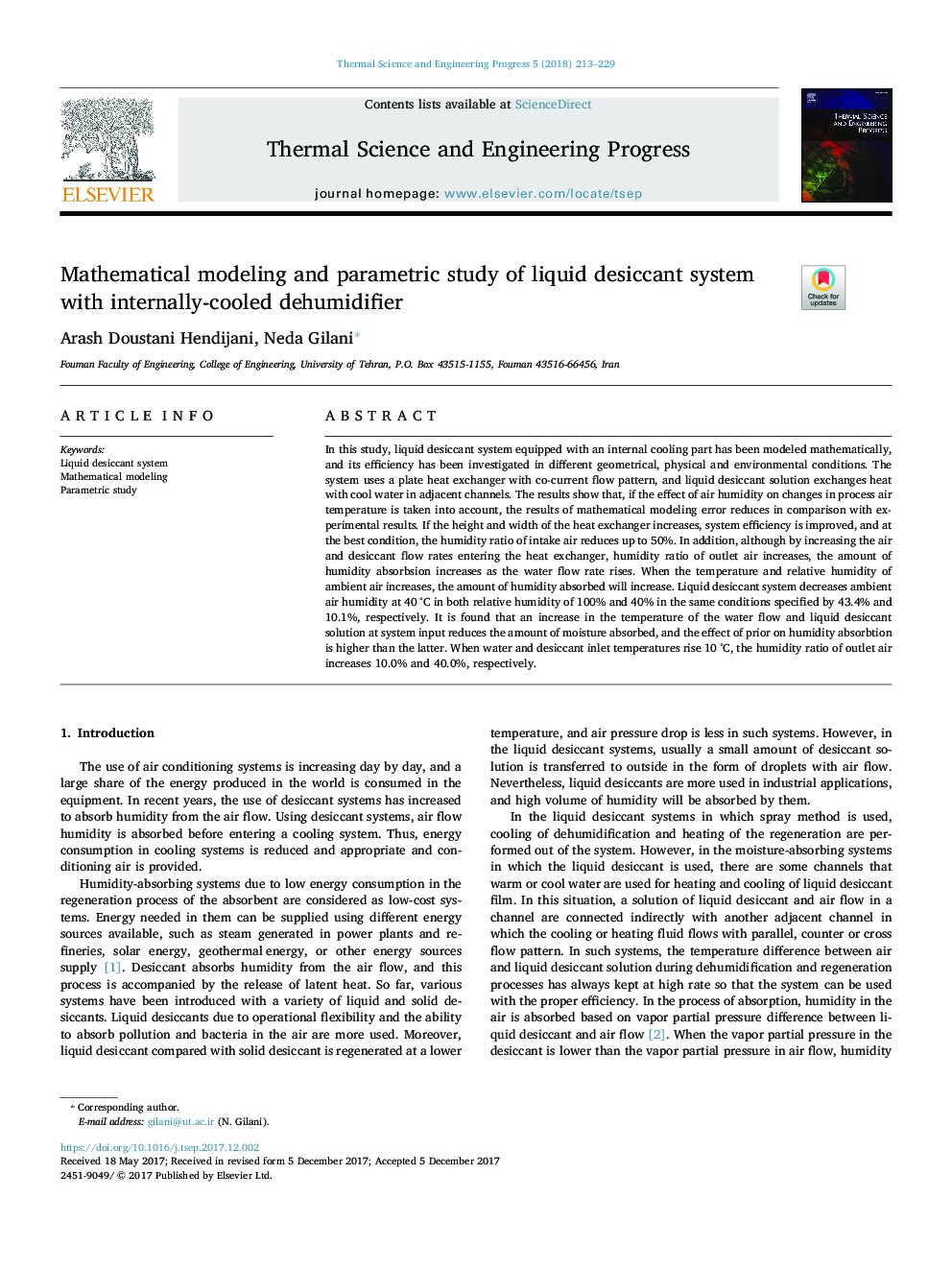| Article ID | Journal | Published Year | Pages | File Type |
|---|---|---|---|---|
| 8918778 | Thermal Science and Engineering Progress | 2018 | 17 Pages |
Abstract
In this study, liquid desiccant system equipped with an internal cooling part has been modeled mathematically, and its efficiency has been investigated in different geometrical, physical and environmental conditions. The system uses a plate heat exchanger with co-current flow pattern, and liquid desiccant solution exchanges heat with cool water in adjacent channels. The results show that, if the effect of air humidity on changes in process air temperature is taken into account, the results of mathematical modeling error reduces in comparison with experimental results. If the height and width of the heat exchanger increases, system efficiency is improved, and at the best condition, the humidity ratio of intake air reduces up to 50%. In addition, although by increasing the air and desiccant flow rates entering the heat exchanger, humidity ratio of outlet air increases, the amount of humidity absorbsion increases as the water flow rate rises. When the temperature and relative humidity of ambient air increases, the amount of humidity absorbed will increase. Liquid desiccant system decreases ambient air humidity at 40â¯Â°C in both relative humidity of 100% and 40% in the same conditions specified by 43.4% and 10.1%, respectively. It is found that an increase in the temperature of the water flow and liquid desiccant solution at system input reduces the amount of moisture absorbed, and the effect of prior on humidity absorbtion is higher than the latter. When water and desiccant inlet temperatures rise 10â¯Â°C, the humidity ratio of outlet air increases 10.0% and 40.0%, respectively.
Related Topics
Physical Sciences and Engineering
Energy
Energy Engineering and Power Technology
Authors
Arash Doustani Hendijani, Neda Gilani,
